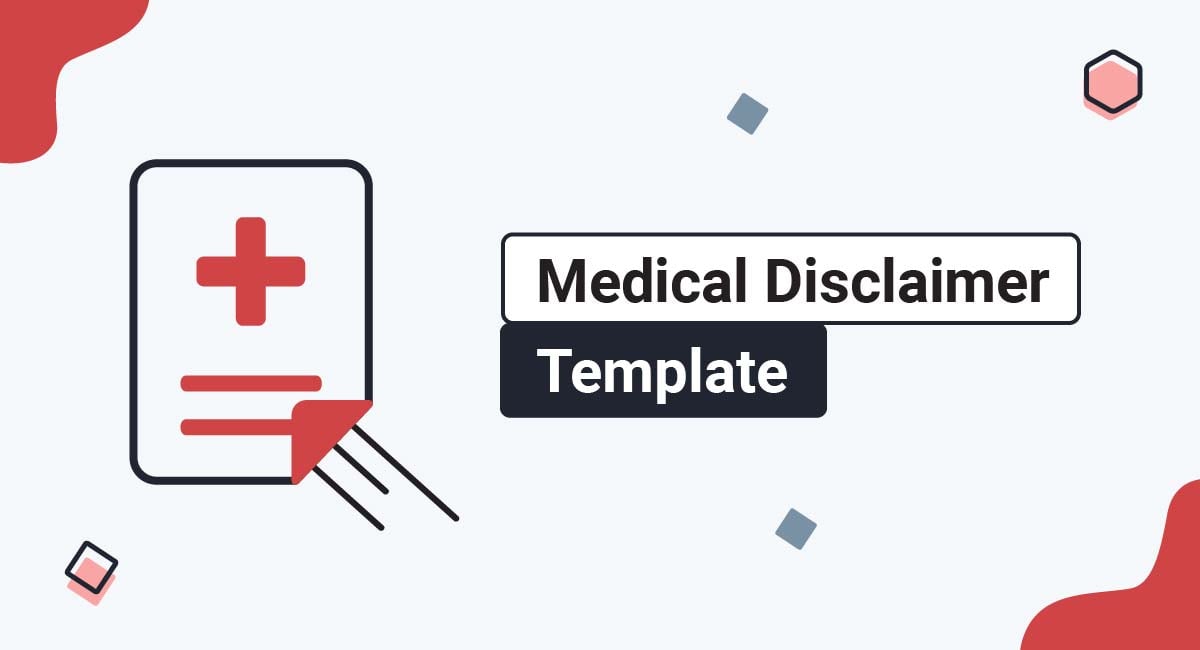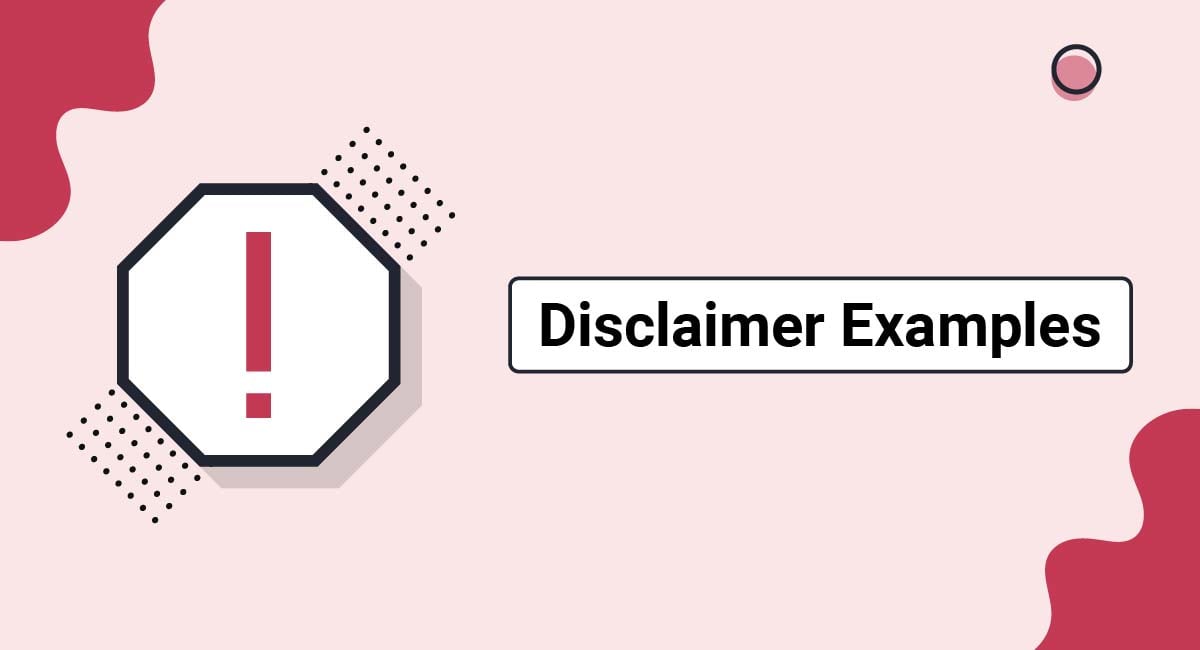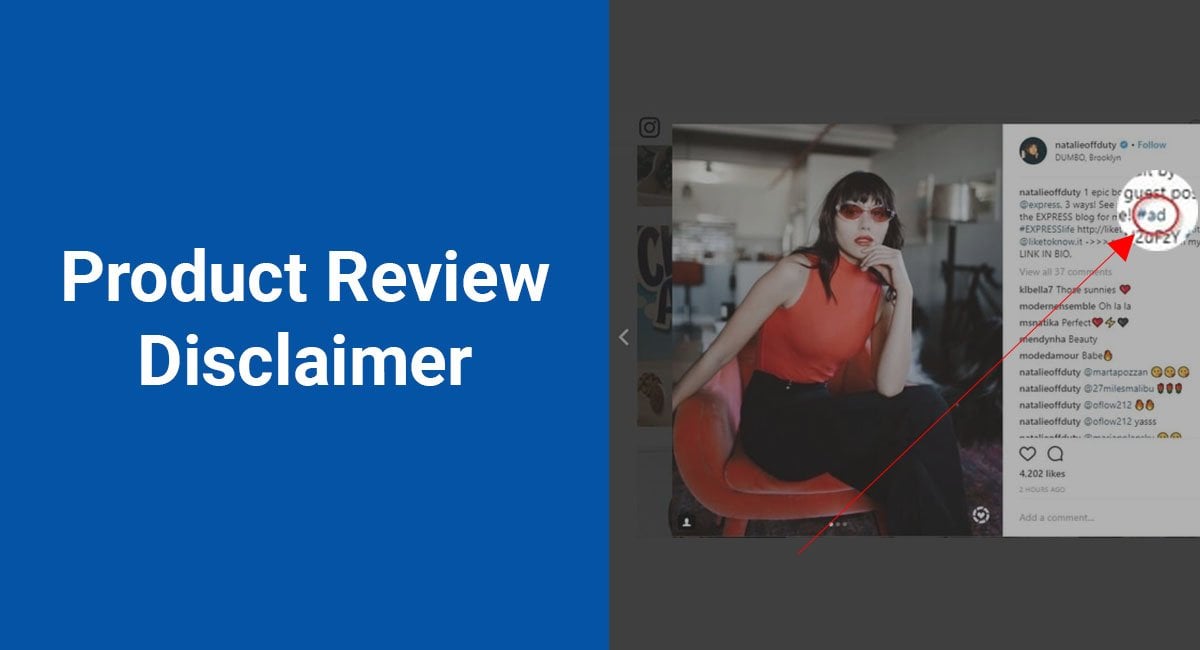If you are a medical, healthcare, or fitness-based business, including a medical disclaimer on your website is crucial. Doing so can help you reduce legal liability by clearly communicating the limitations and scope of your information or services. It can also offer important information to your users to help keep them safe and healthy.
In this article, we'll review everything you need to know about medical disclaimers and why you should have one. We'll also show examples, offer guidance on how to write them, and provide a Medical Disclaimer Template that you can use to help write your own.
Our Disclaimer Generator can generate a legal disclaimer for your business, website or mobile app. Just follow these steps:
-
At Step 1, select where your Disclaimer will be used.
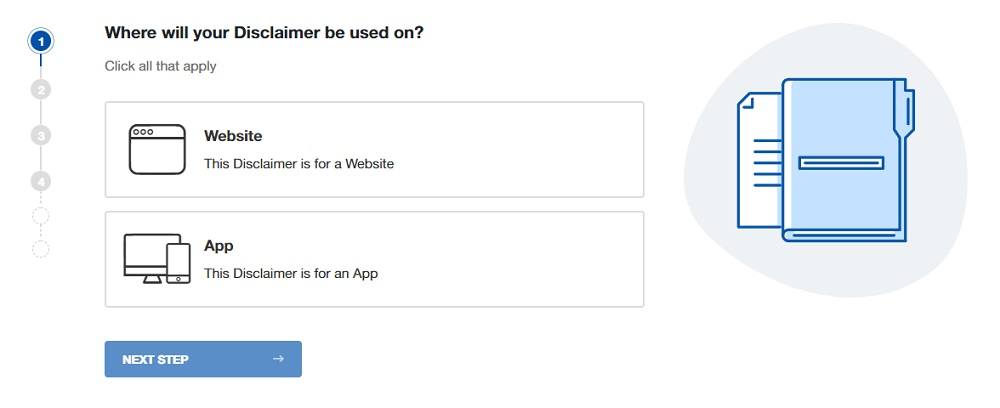
-
At Step 2, add in information about your website/app and business.
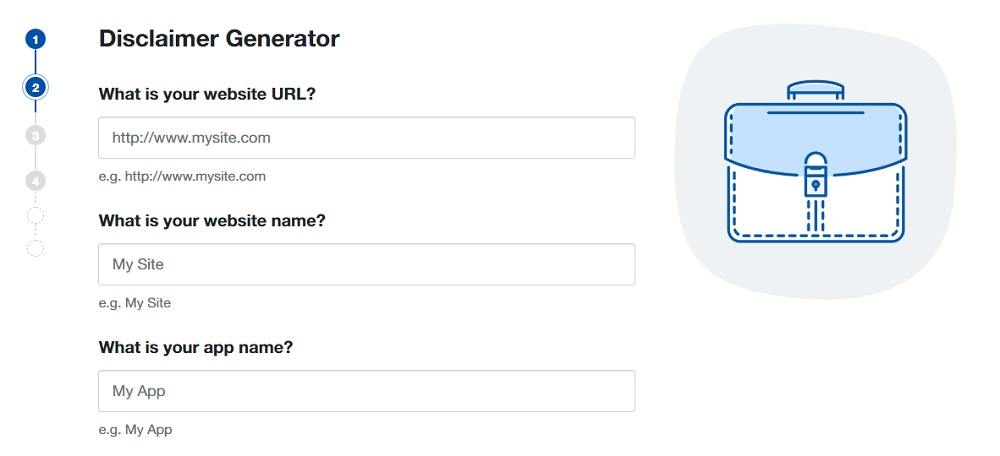
-
Answer some questions about your business practices.
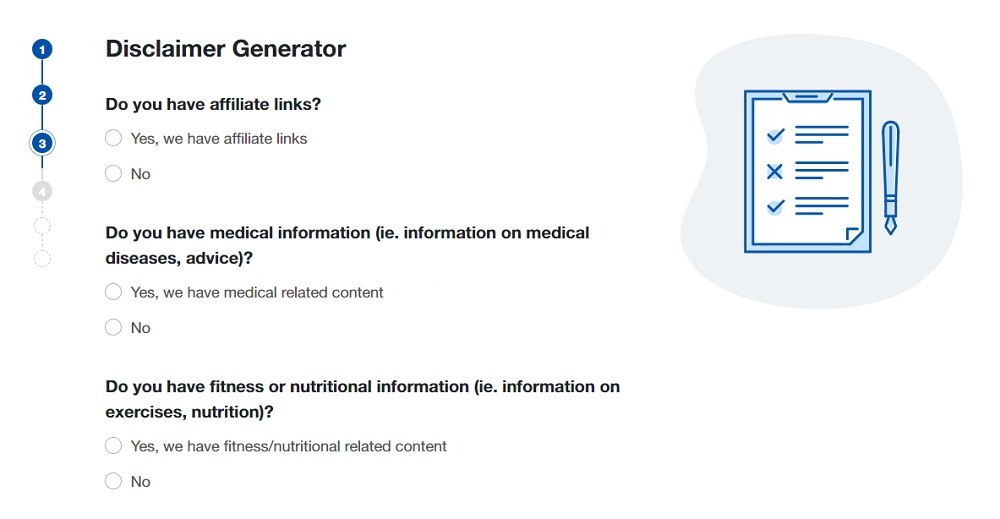
-
Enter an email address where you'd like to receive your Disclaimer and click "Generate."
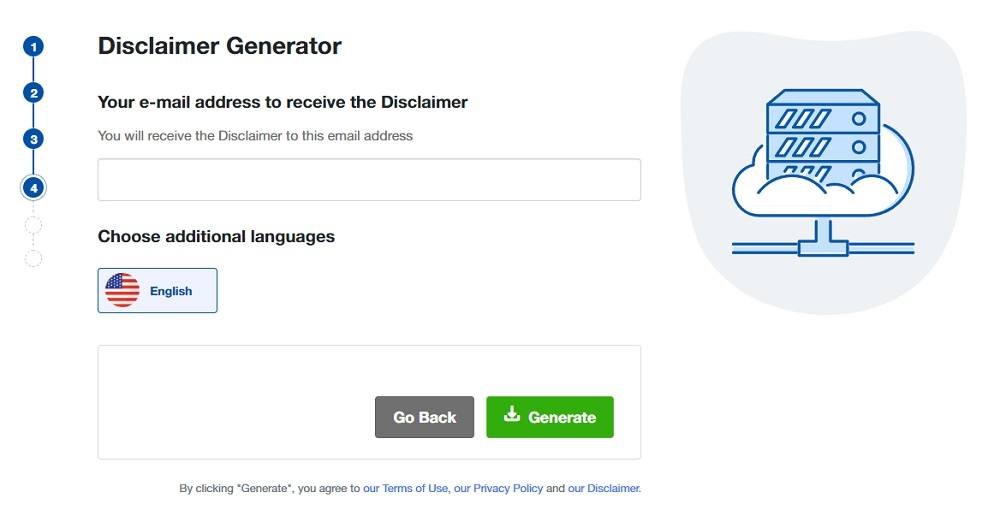
Done! You'll be able to instantly access and download your new Disclaimer.
- 1. What is a Medical Disclaimer?
- 2. Why Should You Have a Medical Disclaimer?
- 3. Medical Disclaimers vs. Health Disclaimers
- 4. Who Needs a Medical Disclaimer?
- 5. How to Write a Medical Disclaimer
- 6. Medical Disclaimer Examples
- 6.1. Medical Blogs
- 6.2. Hospitals
- 6.3. Medical Associations
- 6.4. Medical Schools
- 6.5. Pharmaceutical Companies
- 6.6. Websites that Sell Medical Equipment
- 6.7. Medical Apps
- 7. How to Display a Medical Disclaimer
- 8. Summary
What is a Medical Disclaimer?
A medical disclaimer is a statement that informs your audience that the information provided on your website is for educational or informational purposes only and should not be considered a substitute for professional medical advice or consultation with healthcare professionals.
It should warn your readers that using the information you provide, and relying upon it, is at their own risk.
Here's an example:
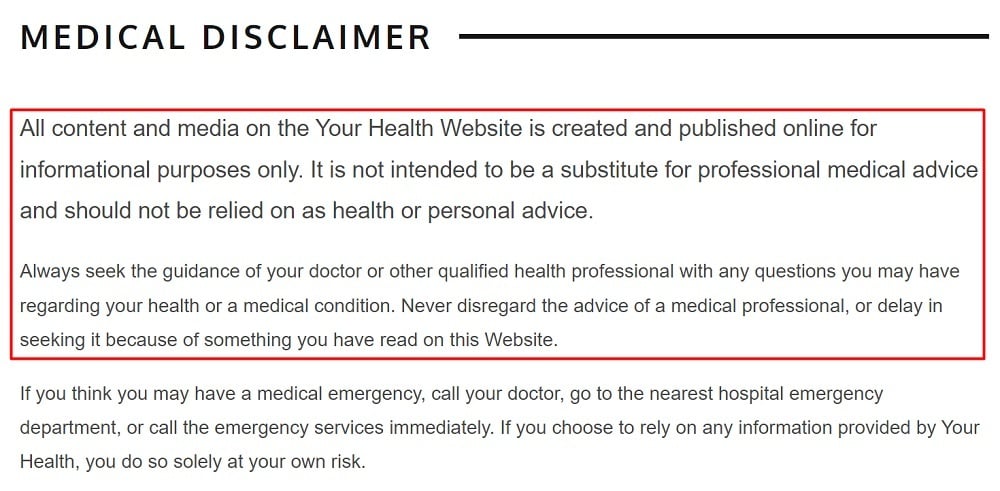
Why Should You Have a Medical Disclaimer?
The primary purpose of a disclaimer like this is to reduce legal liabilities that may arise in case the content on your website directly or indirectly causes your readers harm. It can also help your website's visitors make more informed decisions concerning your content.
Remember that there are several types of medical disclaimers you may consider including on your website, depending on the content you publish on it. These may include any of the following:
- Medical advice disclaimers
- Health disclaimers
- Confidential email disclaimers
- "I am not a doctor" disclaimers
- Medical disclaimers for fitness programs
Medical Disclaimers vs. Health Disclaimers

Medical and health disclaimers share similarities, but choosing the most suitable type for your website depends on whether the content primarily relates to medical practices or health-related topics.
Medical disclaimers are necessary when the site's content might be misconstrued as providing medical advice.
For example, when you use Everyday Health's symptom checker, the following medical disclaimer is visible immediately below it:
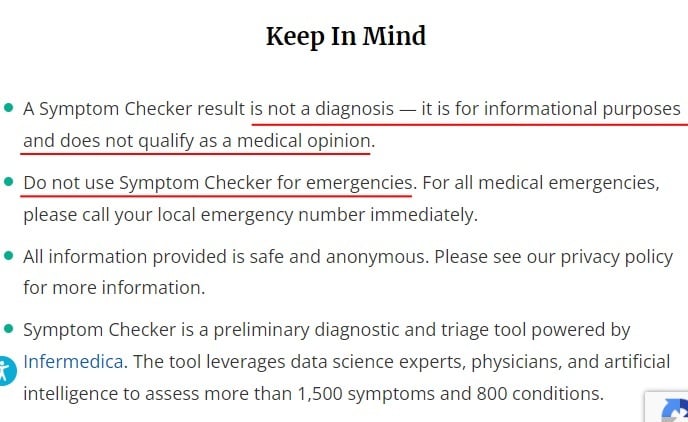
It is worth noting that even if your doctor published the information you are reading, a medical disclaimer is often attached.
On the other hand, health disclaimers are more appropriate when the advice or recommendations given on the website could pose health risks and don't bear a resemblance to a doctor's advice.
For instance, the health disclaimer from Strong Home Gym reads like this:
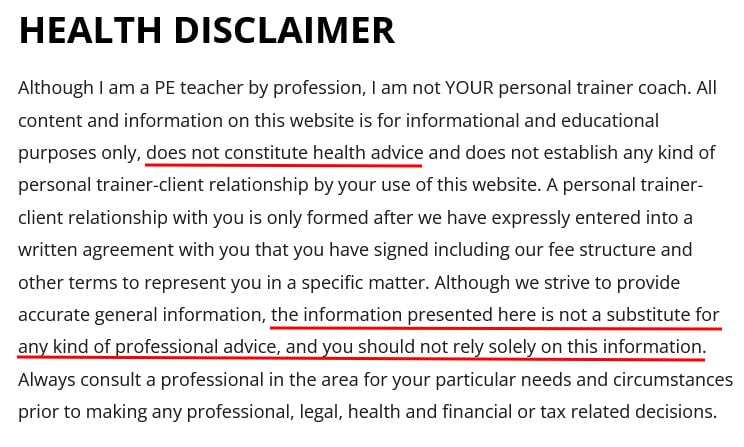
Who Needs a Medical Disclaimer?
Medical disclaimers are typically found on the websites of:
- Alternative Medicine Blogs and Publications
- Hospitals
- Medical Associations
- Medical Blogs
- Medical Schools
- Pharmaceutical Companies
- Websites that Sell Medical Equipment
Health disclaimers are often featured on:
- Fitness Program Websites
- Gym websites
- Health Blogs
How to Write a Medical Disclaimer

To create a standard medical disclaimer, do the following:
- Clearly state that the information provided on the website is intended solely for educational purposes and cannot substitute for professional medical advice.
- Advise users to seek medical advice, diagnoses, or treatment from a medical professional or healthcare provider.
- Make it clear to users that any issues or risks associated with using or acting upon the information on the site are not the site owner's liability.
- If applicable, clarify that using the app or site does not establish any doctor-patient relationships.
Let's look at some disclaimers that include the above components.
Medical Disclaimer Examples

Medical disclaimers differ in their level of detail across various healthcare websites. Besides indicating that a website does not provide medical advice, a medical disclaimer may incorporate other organizational or site-specific information or recommend resources for users who need medical advice.
To better understand a medical disclaimer's function, let's review several medical disclaimer examples from healthcare industry organizations and businesses.
Medical Blogs
Many health practitioners run blogs or publish articles on medical and health topics. Because anyone on the internet can access and read these articles, and take any advice in them without being an actual client, a medical disclaimer can be very helpful here.
Medicine for Average Joes is a medical blog for non-medical people. Its contents are largely the thoughts and opinions of Robert Ridgeway, a nationally certified and licensed physician assistant.
To prevent readers from misconstruing the website's content as medical advice, the site includes the following disclaimer:
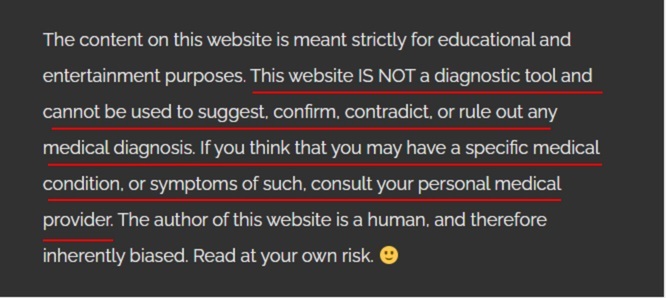
It states that the site is not a tool for diagnosing anything, and suggests that the reader consults their personal medical provider if there are any concerns about specific conditions or symptoms.
Here's another example of how this could look:

This disclaimer states that the content is informational and educational only, and not medical advice.
Hospitals
Although a hospital is staffed with numerous medical professionals, it is important to note that its website cannot replace individualized medical treatment and advice.
Hospitals, therefore, use medical disclaimers to provide transparency about the limitations of the information on their websites and to help ensure that visitors seek appropriate medical advice and treatment from qualified professionals.
Here's how St. Joseph's Healthcare Hamilton (SJHH), an academic and research healthcare organization and hospital, phrases its medical disclaimer:
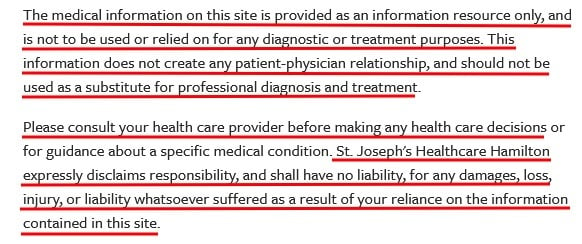
This disclaimer notes that the information on the site does not create a patient-physician relationship. It also works to disclaim responsibility and liability in the event that someone relies on the information on the site and experiences an injury, damages or a loss.
Medical Associations
Although there is a wealth of information available on medical association websites, the key point to understand is that it is not intended to offer free medical advice. The American Medical Association, for example, lays that out clearly in a single sentence within its disclaimer:

To cover the fact that medical information is always changing with new discoveries and research, this disclaimer notes that the content on the site is believed to be current and accurate at the time it's posted. This helps to ensure that you won't be held responsible for posting something incomplete, or that turns out not to be fully correct.
Medical Schools
Although the research conducted by medical schools can be fascinating, it is not advisable to rely solely on their findings to make significant medical decisions.
The University of Miami's School of Medicine, for instance, suggests that readers should "confirm the information herein with other sources." The information presented should be discussed with a medical professional during individual medical care consultations:
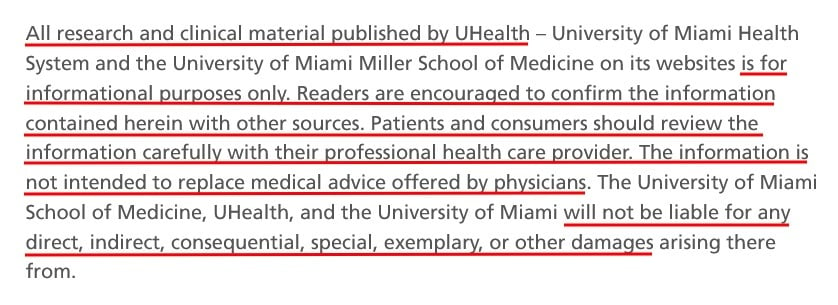
Pharmaceutical Companies
Because pharmaceutical companies are so big, and often in the news, they will likely get high website traffic.
Any individual who navigates to the Novartis Terms of Use webpage will encounter the following medical disclaimer:
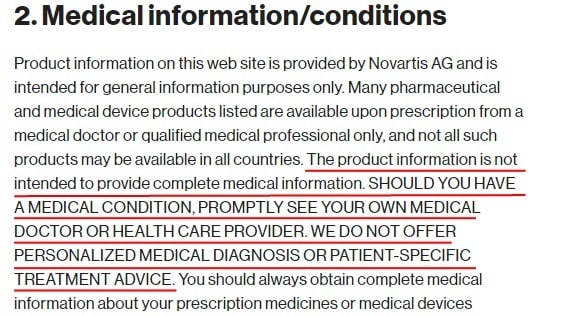
This disclaimer notes the concept that the medical information is not personalized, patient-specific nor complete. The use of all-caps font helps draw attention to this important fact so that readers don't wrongly assume that the information will be fully complete and applicable to them all, all the time.
Websites that Sell Medical Equipment
Applied Medical is a manufacturer of surgical instruments for minimally invasive procedures. Despite its expertise in modern medicine, the company includes a specialized medical disclaimer in its Legal Notice:

After you have your medical disclaimer created, you need to display it in a way that it's most easily noticed and accessible.
Medical Apps
If you have an app that tracks health or medical data, you can and should include a disclaimer that lets users know that the app is not a substitute for a doctor, nor is it intended to diagnose or treat medical issues.
Here's how the Fitbit mobile app reminds users about its disclaimer:
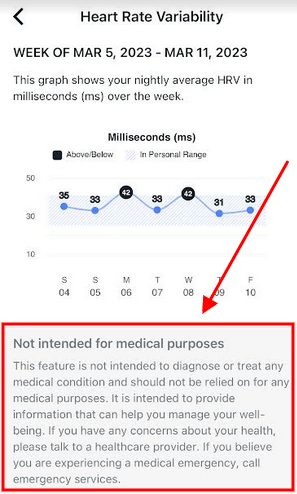
Now that you have a better idea of what content should go into your medical disclaimer, let's look at some best practice ways to display it to the public.
How to Display a Medical Disclaimer

Your medical disclaimer should be linked to your website footer if you have it as a standalone page, or as part of a disclaimer page. If it's part of your Terms and Conditions agreement or other legal agreement, make sure to link this agreement to your site footer, as seen here:

Here's an example of a how to display a disclaimer link in a heading menu of a website:

While it's always a good move to put a link to anything important in your website's footer since people know to look here, putting a disclaimer link in a menu at the top of the site is an excellent idea. This helps make sure that anyone looking for any information on the site will be sure to see that there's a disclaimer to view.
If your disclaimer is short enough, or you have the room in your site's footer, you can include the full text of it there, as seen here:
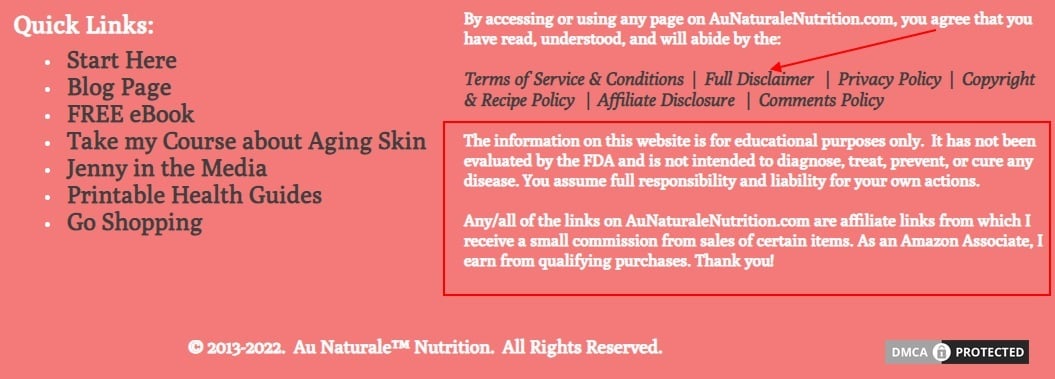
Summary
If you run a website, blog or ecommerce site that deals in any way with medical advice or products, a medical disclaimer can help reduce your legal liabilities and encourage users to make informed decisions about their health.
Your medical disclaimer should state that your content is only for informational purposes and should not be used in place of an actual doctor's visit. State that the information you provide is to be used by users at their own risk.
Make sure your medical disclaimer can easily be viewed at any time, and by people who visit your site and view your medical content.

Comprehensive compliance starts with a Privacy Policy.
Comply with the law with our agreements, policies, and consent banners. Everything is included.
